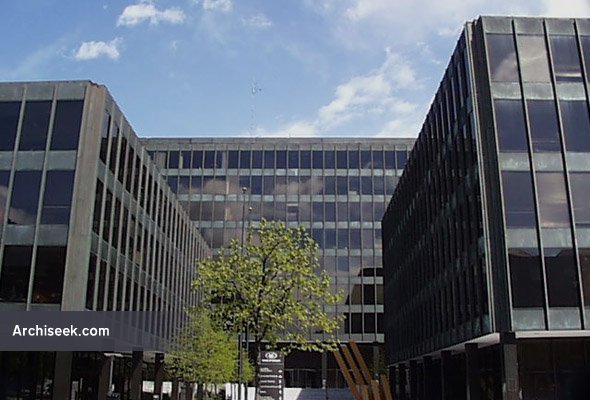1978 – Bank of Ireland, Baggot Street, Dublin

The Bank of Ireland in Baggot Street is most notable for two things other than its architecture: the amount or Bronze Manganese used in its construction – a commonly held myth was that it used so much that it affected the price on the world market; and the passions it aroused during its construction. Almost universally loathed by the public and adored by architects, the Bank went to great lengths to build the project against the wishes of nearly everyone, including demolishing Georgian houses at 5am on a Sunday morning.
Consisting of three blocks, the first of which was started in 1968 and the last completed in 1978, the building is at complete odds with Georgian Baggot Street. The use of the brown coloured cladding and tinted glass helps minimise its impact but the basic impression is of a huge leviathan shoe horned into the street.
The building is un-ashamedly a homage to Mies van der Rohe with its external steel work and expressionless minimalist façade. Designed by Ronald Tallon of Scott Tallon Walker who was a great fan of Mies, the three blocks are sited around a courtyard complete with bright steel sculpture. The two smaller blocks of four & five storeys funnel you towards the main block of eight storeys on a podium which is approached via a flight of steps.
During the height of the boom in the early 21st century, plans were put forward to use more of the available land to add more office space to the building. As fairly unsympathetic design, it only succeeded in raising the ire of architects. As of mid 2012, the Bank of Ireland had vacated the building.




